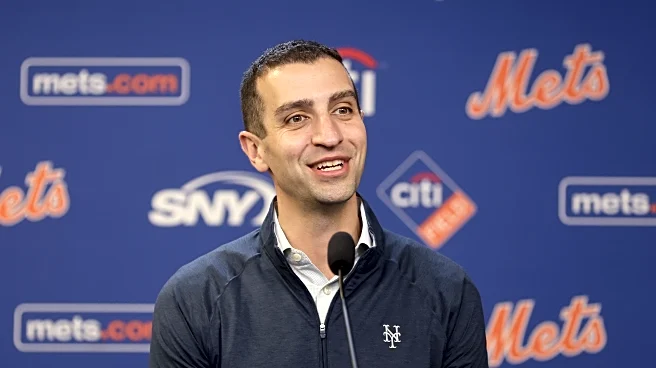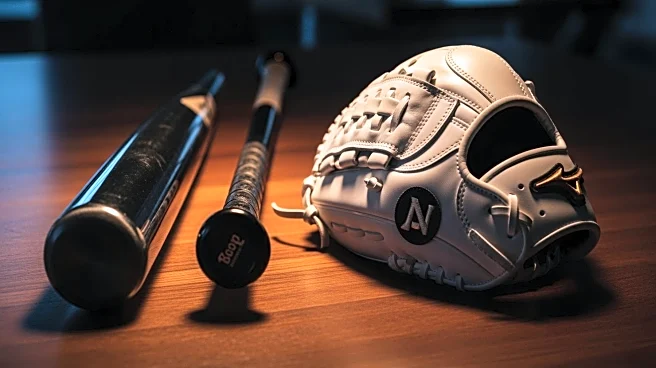What's Happening?
The New York Mets are contemplating retaining their star slugger, Pete Alonso, who has entered free agency this offseason. The Mets are reportedly considering offering Alonso a contract under the condition
that he shifts to the designated hitter (DH) role. Alonso, primarily a first baseman, has faced criticism for his defensive performance, which has been deemed subpar. Mets executive David Stearns has emphasized the team's focus on improving run prevention, which includes enhancing both pitching and defense. Alonso's offensive prowess is undeniable, as he posted a .272 batting average with 38 home runs and 126 RBIs in the last season. The Mets currently lack a clear DH, making Alonso's potential transition to this role a strategic move to retain his offensive capabilities while addressing defensive concerns.
Why It's Important?
The decision to potentially retain Pete Alonso as a DH is significant for the Mets as it addresses their need to improve team defense while maintaining offensive strength. Alonso's ability to contribute significantly to the team's run production makes him a valuable asset, despite defensive shortcomings. If Alonso accepts the DH role, it could enhance the Mets' overall performance by allowing them to focus on acquiring a stronger defensive first baseman. This move could also influence other teams' strategies in the free-agent market, as Alonso's power-hitting skills are highly sought after. The Mets' approach reflects a broader trend in baseball where teams are increasingly prioritizing defensive capabilities alongside offensive talent.
What's Next?
The Mets are expected to engage in discussions with Alonso's representatives to explore the possibility of him accepting the DH role. If Alonso agrees, the Mets will likely proceed with contract negotiations to secure his return. Meanwhile, other teams interested in Alonso's power-hitting abilities may also make offers, potentially leading to competitive bidding. The outcome of these negotiations will impact the Mets' roster decisions and could set a precedent for how teams manage players with strong offensive but weaker defensive skills.












